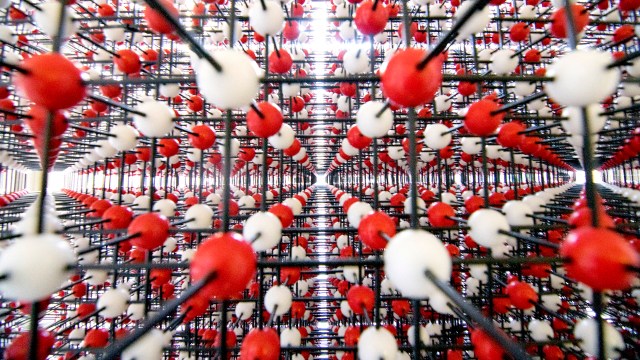Why Hubble will never see the first stars
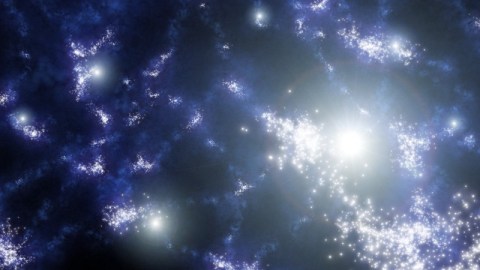
Even if it looked for an infinite amount of time, they’d always be invisible.
“Now the world has gone to bed, Darkness won’t engulf my head, I can see by infrared, How I hate the night.” –Douglas Adams
Imagine what the Universe must have been like after the Big Bang, before the first stars ever formed. As space expands, it gets harder and harder for particles to find each other and collide, and the energy-per-particle decreases, since the Universe cools as it expands. After 380,000 years, it’s cool enough that atomic nuclei and electrons can stably bind together, producing neutral atoms. As the years pass by the millions, slightly denser-than-average regions pull more and more matter in gravitationally, leading to clumps and clusters of molecular gas clouds. As a region gets denser, its gravitational pull gets even larger, and the rate of growth increases. At some point, at the focal point of all of this clumping, the gas gets dense enough and hot enough that the first nuclear fusion reactions ignite. And as this happens at various locations and at various times, the Universe forms its very first true stars.
But this is light that telescopes like Hubble can never see. No matter how powerful an optical space telescope like Hubble gets, it’s fundamentally restricted and cut off from seeing these stars. There are two main reasons why.
First off, the first stars might be very bright and hot, but all of the neutral atoms — the gas permeating the Universe — won’t simply allow that light to pass. Neutral atoms are extraordinarily good at absorbing electromagnetic radiation, particularly UV and visible light, which is the vast majority of what these young stars emit. In order to see the first stars, a telescope like Hubble would need for that neutral gas to be replaced with something transparent to that light: something like an ionized, diffuse plasma. This is what the intergalactic medium is made of today, but it took hundreds of millions of years for it to get there.
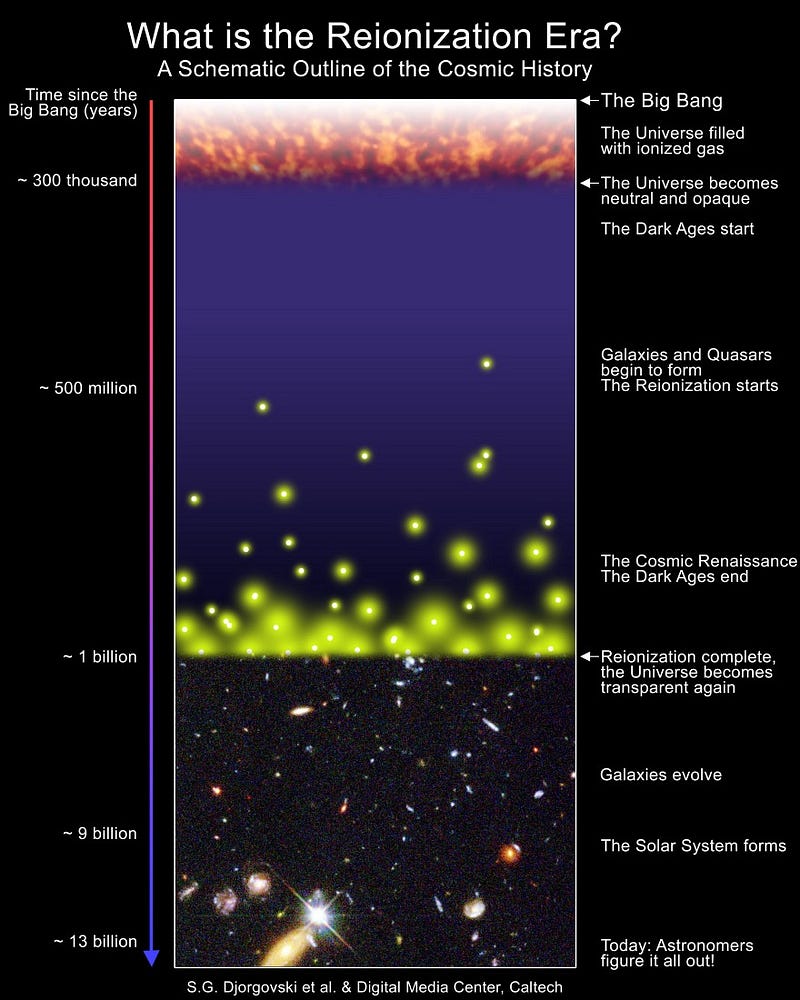
We call this process “reionization,” because the Universe needs to become ionized for the second time: once for the first 380,000 years, when it was too hot for neutral atoms to form, and now the second time, where the Universe’s stars ionize the now-neutral gas. The problem is that this is a process that takes hundreds of millions of years, with estimates ranging from 500 to 700 million years until the process completes. There are always going to be a few pockets from any perspective — including from Earth — where reionization happens sooner, and that’s where we have the opportunity to see more distant stars and galaxies than anyplace else. In fact, that’s how Hubble’s discovered the most distant galaxy to date!
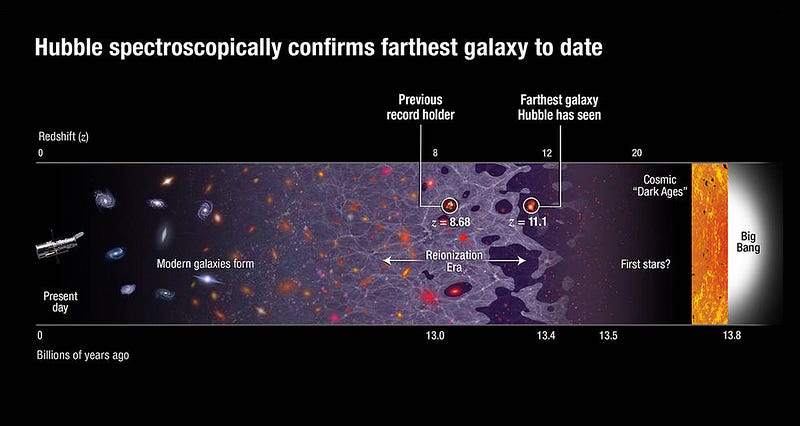
But it likely can’t go much farther, because anyplace else it would look, it would run into too much of that neutral gas, which obscures the young stars beyond it. The farther back you go, the more the intergalactic medium interferes with your light, making it difficult to observe. But even if Hubble didn’t have this gas to contend with, there’s a second major problem: any light that the Universe creates gets redshifted, and has its wavelength stretched, as the fabric of space expands. If the first stars were created at a redshift of 20, or 30, or 50, that means their wavelengths are 21, 31 or 51 times as long as the moment that light was created.
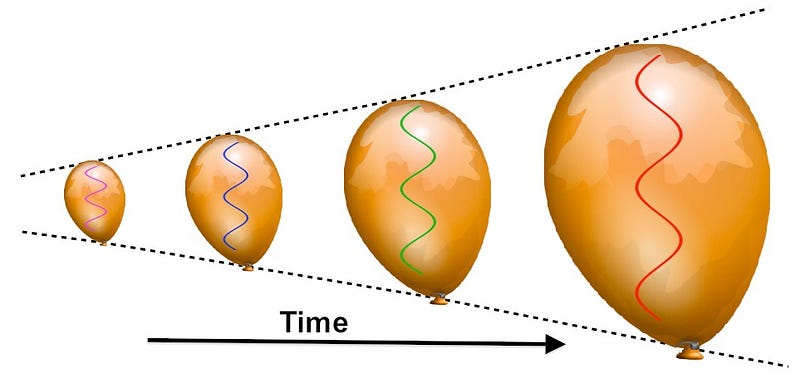
This corresponds to a very long time ago, of course. Our Universe is 13.8 billion years old today, which I want you to think of as 13,800 million years old for these purposes. The reason is, the Universe becomes transparent to optical light at times between 500-to-700 million years of age, with the most distant known galaxy existing in a rare “pocket” where the Universe is transparent at only 400 million years old. But various estimates for the time of formation of the very first stars, at redshifts of 20, 30 and 50, correspond to ages of the Universe of 177 million, 98 million and 46 million years, respectively. Even if the Universe were transparent to begin with, the wavelengths of light we’d look for — that strong Lyman-α emission line at 121.567 nanometers (UV light) — will be redshifted to wavelengths of 2,553 nm, 3,769 nm or 6,200 nm, depending on how early these stars formed.
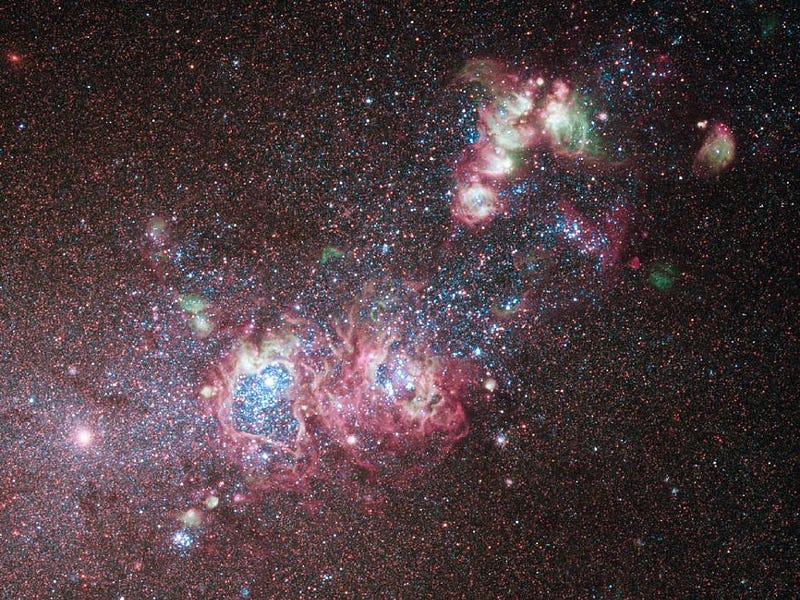
The farthest infrared filter on Hubble can only reach about 1,600 nm, but its successor, the James Webb Space Telescope (launching in 2018!), will go all the way to a wavelength of 28,000 nm! For comparison, UV radiation is less than 400 nm, visible is between 400 and 700 nm, near-IR is from 700 nm to about 5,000 nm, and mid-IR goes from 5,000 nm to around 25,000–40,000 nm.
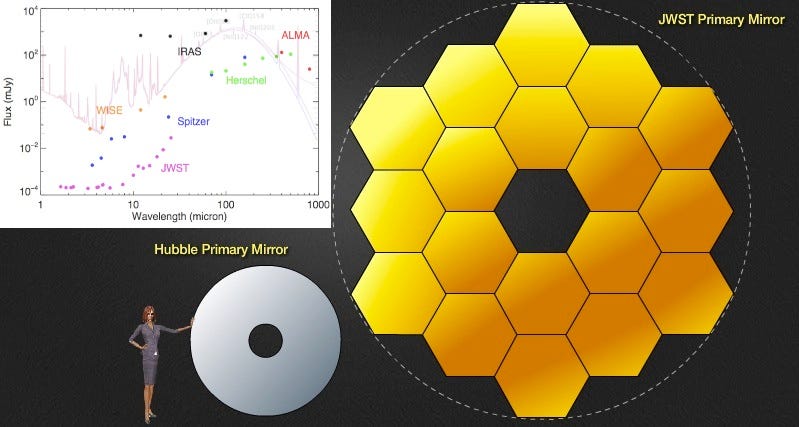
Now, this doesn’t necessarily mean that James Webb will be able to see the first stars for certain, as the majority of the emitted light will still be absorbed by neutral gas at these great distances and early times. Even though the light today is in the infrared, which will simply pass through this neutral gas-and-dust, there’s simply too much to pass through when it’s still in the ultraviolet and visible parts of the spectrum for this to be a slam-dunk. But it means we’ll have a chance, where Hubble has none. We’ve pretty much pushed the limits of Hubble and luck in finding a galaxy (and starlight) from when the Universe was just 400 million years old. To get to the true first stars, at ages less than 200 million years (and perhaps as early as 40–50 million years), you need an infrared telescope, and in particular an infrared telescope that isn’t subjected to the limits of our atmosphere.
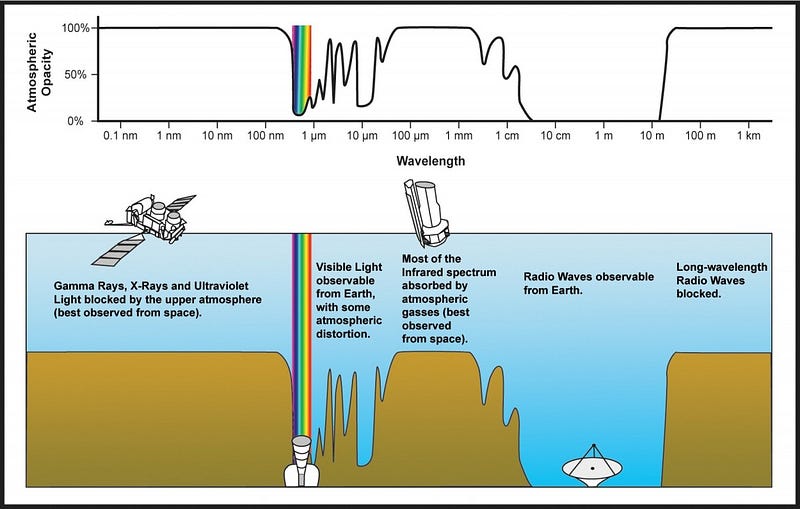
We’re getting that in just two years! And so while Hubble may never see the first stars, it’s brought us closer than we’ve ever been before. When the next generation of space telescope comes online, it’s a certainty that we’ll see farther back that humanity ever has in the Universe’s history of forming stars. And if we get lucky, we might make it all the way back to the very first ones. Even if it can’t do that, future 21-cm astronomy, based on the hydrogen spin-flip transition, will have a chance down the road. No matter how or when it comes, we’re on the cusp of discovering the true first stars in the Universe. I can’t wait to find out!
This post first appeared at Forbes, and is brought to you ad-free by our Patreon supporters. Comment on our forum, & buy our first book: Beyond The Galaxy!





